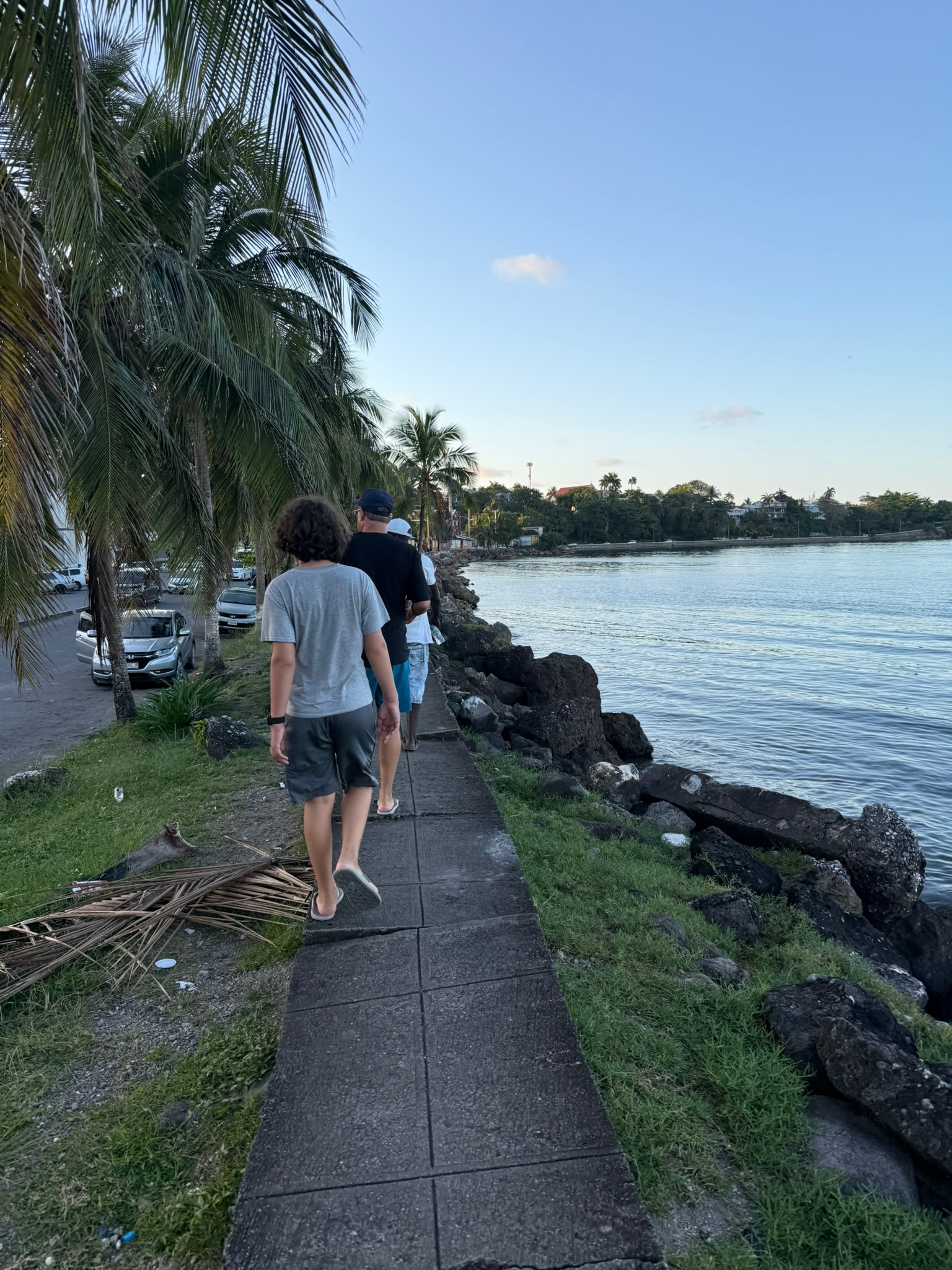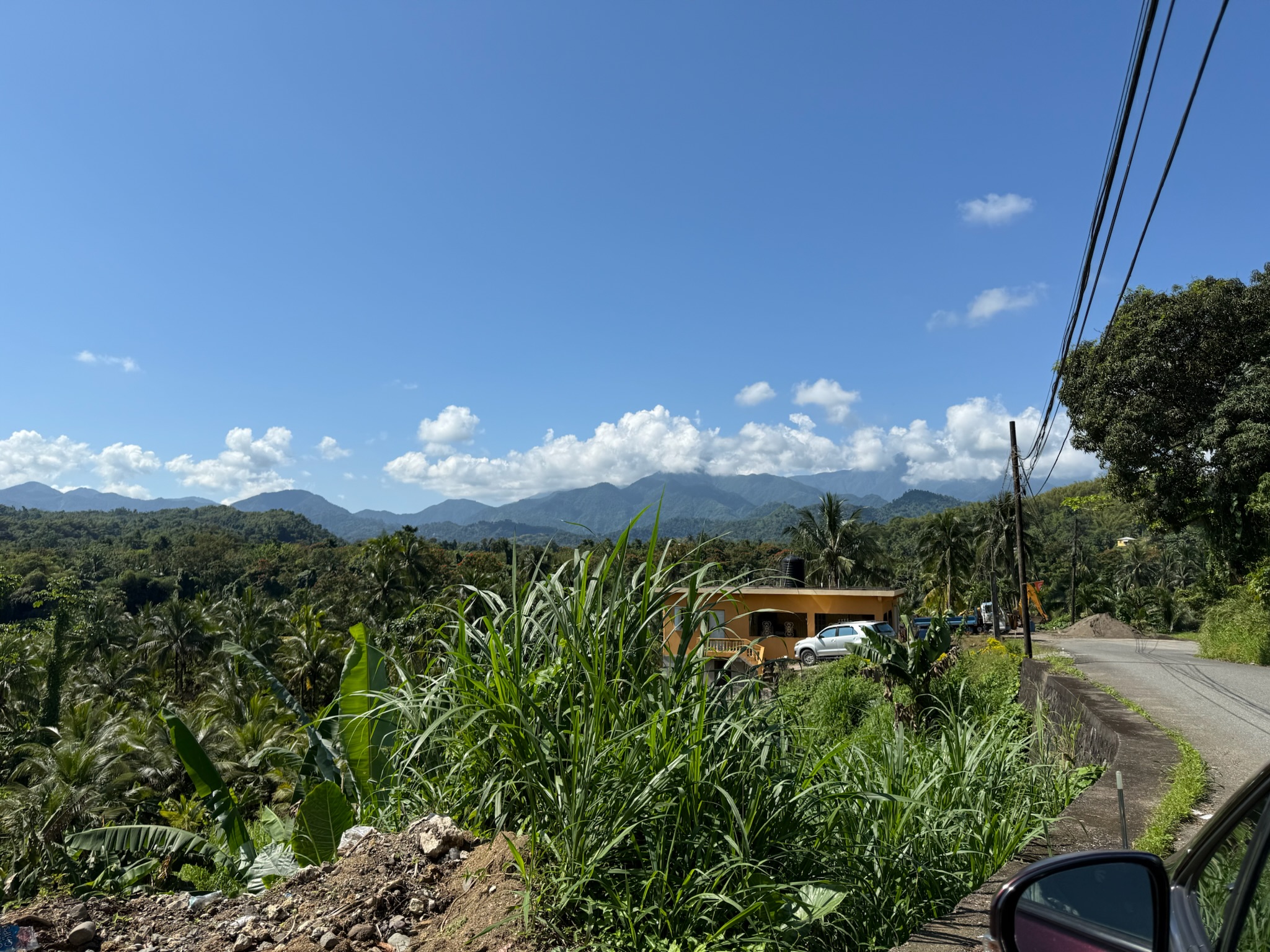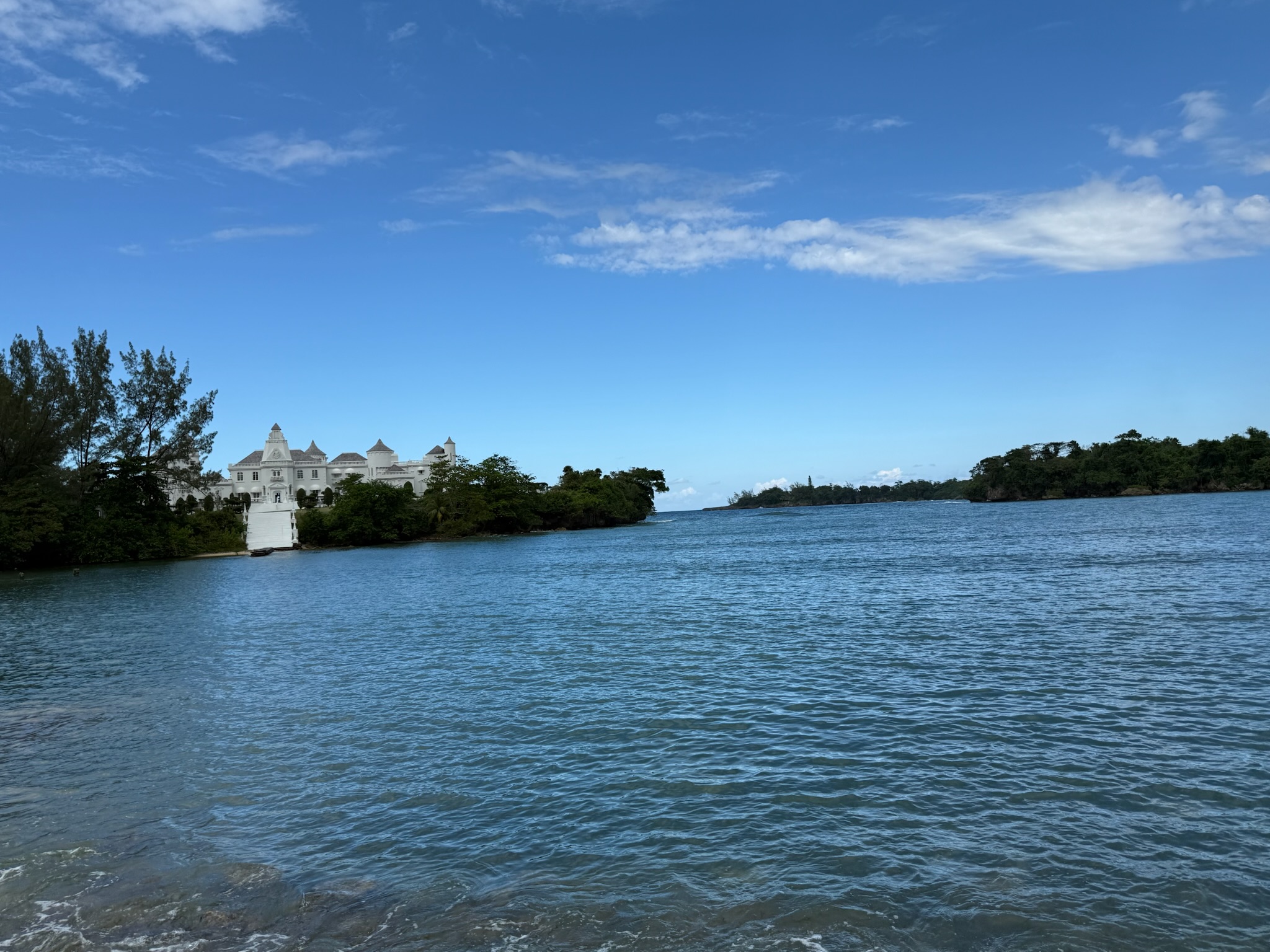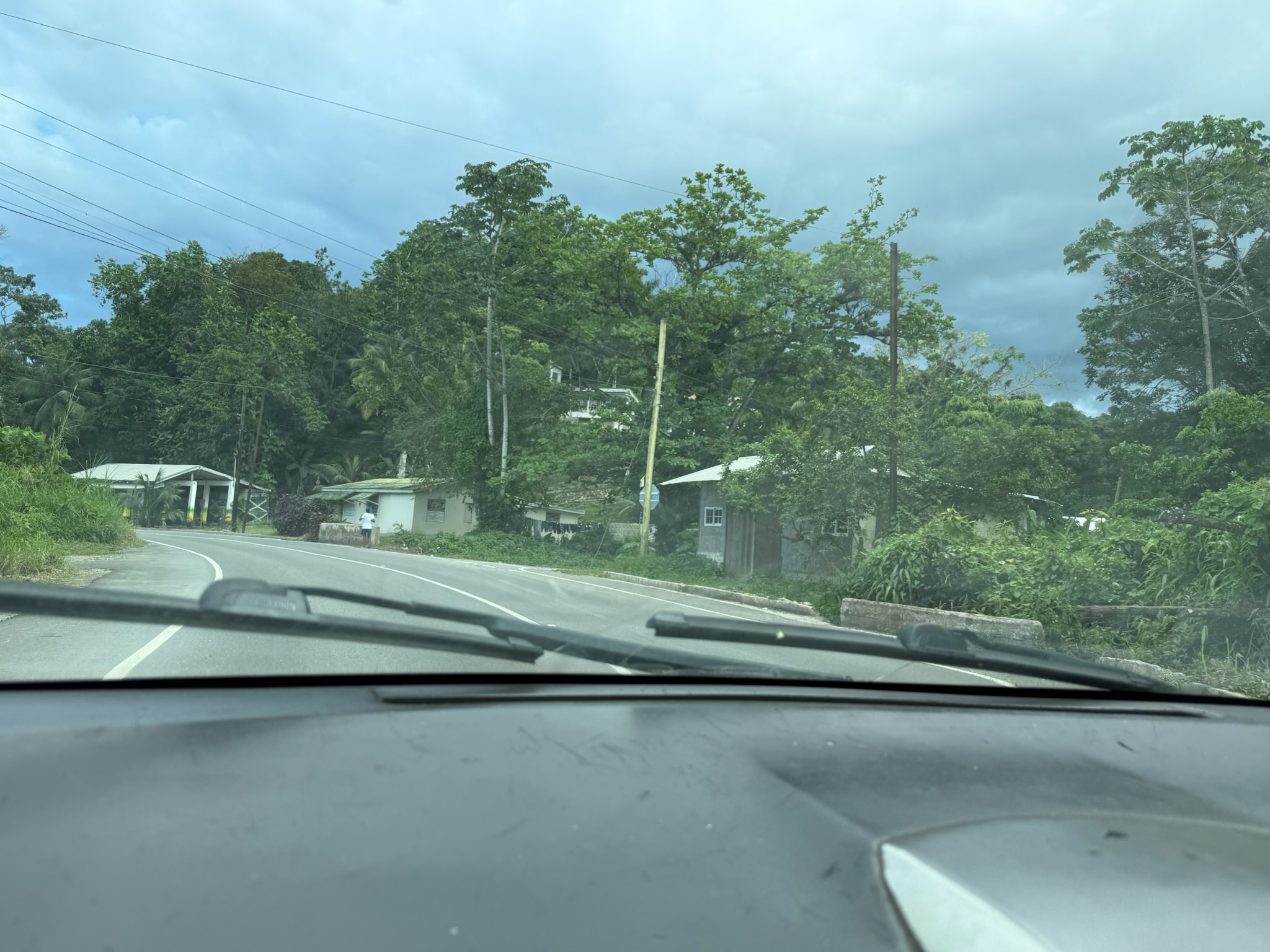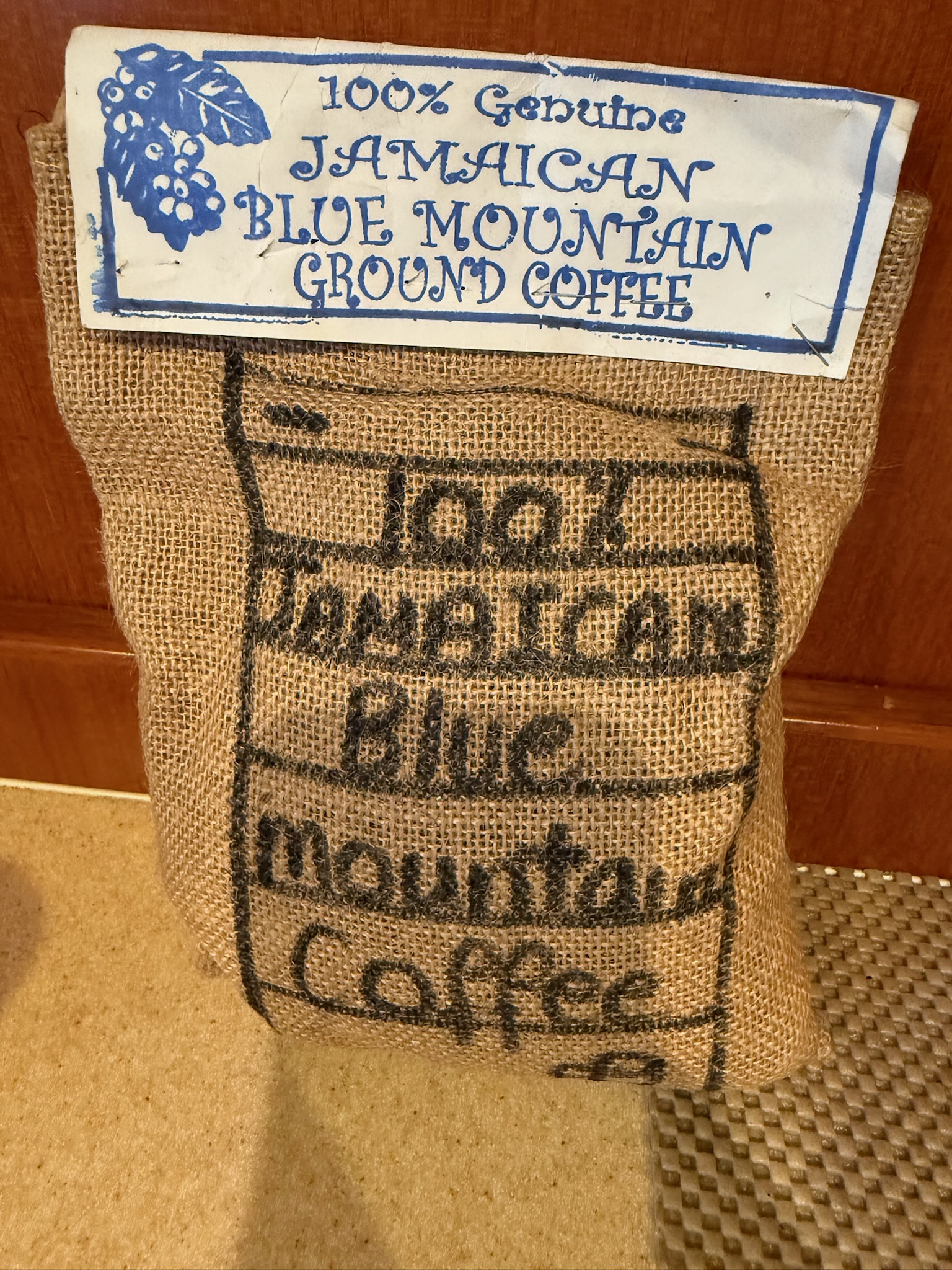Thursday, March 6, continued — Not long after Michael dropped us off at the marina, we headed back out to get dinner. Several people had told us that Piggy’s was the best jerk chicken in town. Others told us that Piglets was even better. You’d think with the names Piggy’s and Piglet’s, they’d serve pork, but they both only served chicken and sides. Ed told us that Piggy’s owner looked like a pig and thus Piggy was his nickname. He also told us that the owner of Piglet’s had once worked as a chef for Piggy’s. Piggy’s had burned down, and rather than waiting for Piggy’s to be rebuilt, the chef opened Piglet’s.
We’d planned to eat at Piggy’s since it was in an actual building and it looked like we could eat inside. John saw us leaving and insisted on escorting us. Piggy’s was on the main road that paralleled East Harbor. As we neared Piggy’s, John insisted that we go to Piglet’s, instead, which was just another block or so down the road.
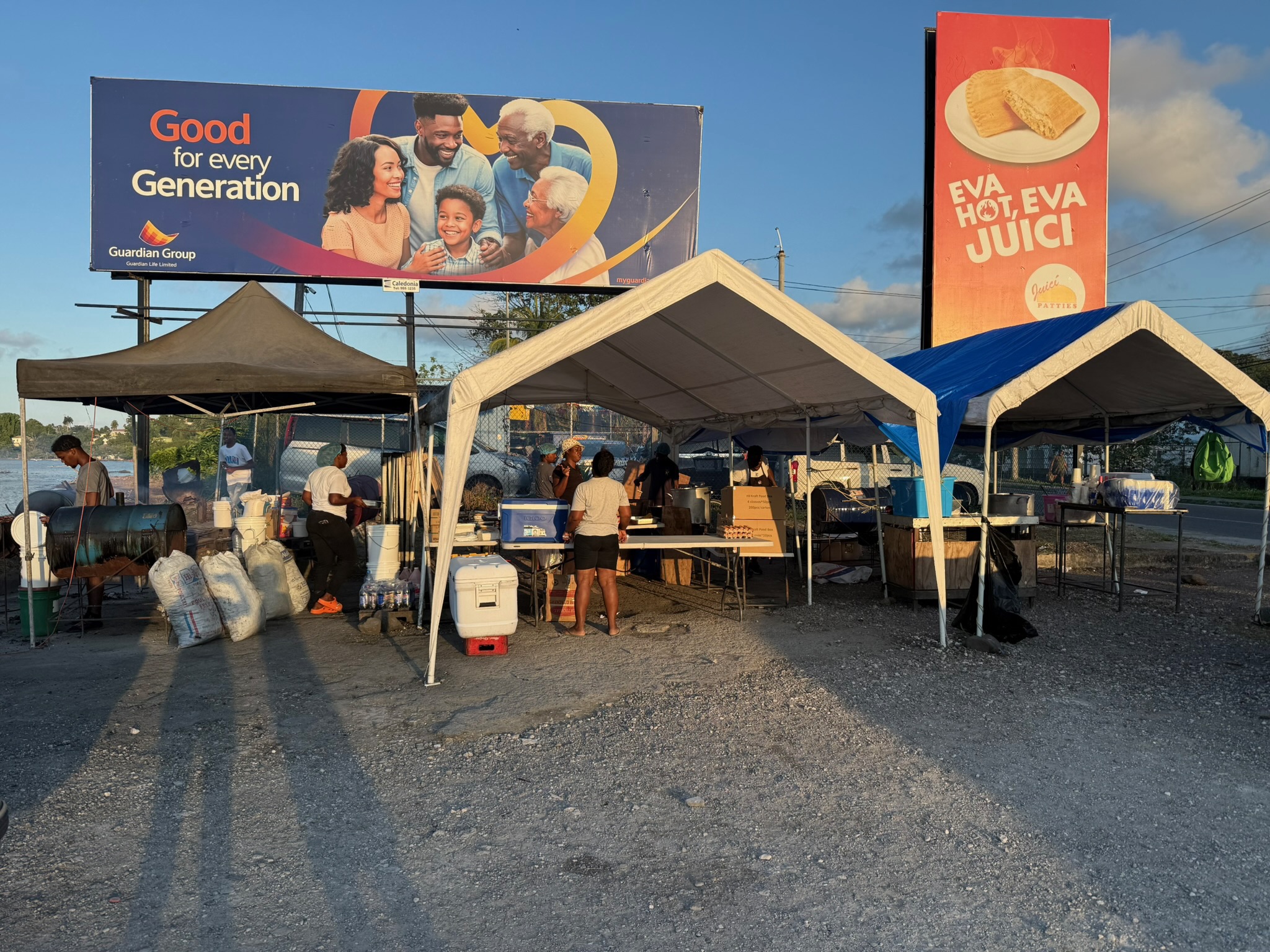
Piglet’s had no menus or signs, so we had no idea what our food choices were beyond jerk chicken. A batch of something yummy looking had just come out of the deep fryer, so when the cashier asked which side we wanted, we pointed to those. Since Piglet’s had no seating, we took it back to the boat to eat it. Here we are walking back towards the boat on a sidewalk that wins for most scenic and most treacherous.
